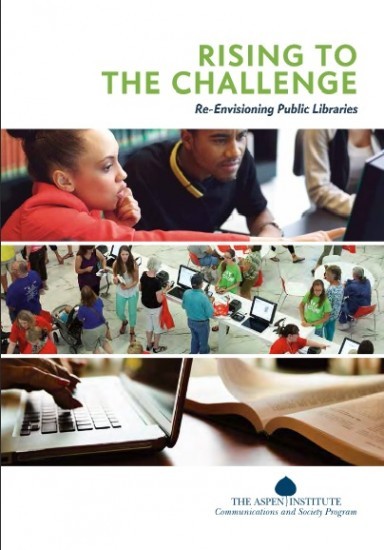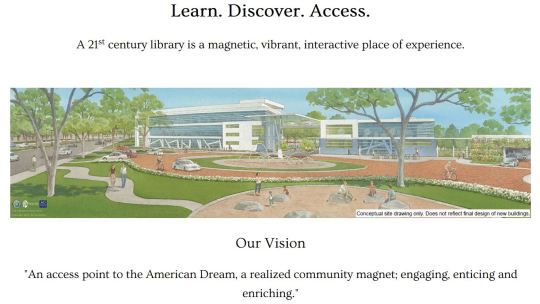
Taking its work on the future of public libraries
to the next stage, the Aspen Institute has selected Winter Park,
Florida as one of five locations with which it will work closely to
develop a useful set of models for all kinds of public libraries.
As
part of that effort, Aspen and the library and City of Winter Park held
a day-long community dialogue and visioning meeting last Thursday. (I
was asked to participate because I previously worked with Winter Park and I’m one of the small group of advisors to the Aspen Institute.)

I
won’t use this space to repeat what I’ve said about libraries already,
but instead this is about the Aspen process of engaging citizens to
figure out the future of their communities. What I’ll report below may
seem simple or even obvious, but it’s clear that the Aspen Institute has
been conducting these dialogues for a long time and has a sense of what
works.
Many of us, including myself, have seen enough such sessions accomplish little. We appreciate it when this works well.
It
also helps that Winter Park is a city with engaged residents. For a
city of about 26,000 people, the turnout of several dozen people for an
introductory session on Wednesday night was extraordinary, especially
considering that it was not well publicized.
So too was the
involvement all day Thursday of the Mayor, the City Manager, and another
member of the City Commission, in addition to the President of Full
Sail University, a leaders of Rollins College and Valencia Community
College. Of course, various other local leaders who have been much
involved with the library joined them.
Thursday’s roundtable began
with a discussion of two topics: Library Alignment With Community
Goals and The Library As A Platform For Community Development. This
framing is all important, since the focus is on the community, not about
the library as a solitary building.
Sometimes the discussion was
all over the field. Like the blind men and the elephant, this is
necessary for everyone to hear not so much what each thinks of the
overall thing (the library or even the community) but how it looks from
their particular perspective. Unlike the story of the blind men, this
can work as long people then put together their perspectives to achieve
an understanding of the whole picture.
The pressure from a number
of local futurists also had an impact on the nature of the dialogue –
more on how do we keep up with a changing world, instead of the
too-frequent complaint I’ve heard elsewhere that “we don’t understand
these changes”. I was pleased to hear local residents even talking
about the use of artificial intelligence in libraries, something that
I’ve blogged about but not heard even from many professionals. This is a
good indication that, at least in this community, the library won’t be
overtaken by onrushing technological changes, including one that was made public as we were meeting.
Rather than just continue a general discussion, Aspen’s Amy Garmer then presented 15 possible action steps.
She asked each person to vote on those steps (singly or combined) they
thought most important so that the group could generate a list of three
actions they would start to implement.
This voting and the
discussion around it also had the effect getting people’s commitment to
their choices and thus acceptance of responsibility for follow-up
tasks. And, indeed, as the day ended, several people stepped up to take
on the tasks.
So, in a day and an evening, there was a sequence
of futuristic visioning, discussion of community priorities and
commitments to substantive action steps.
Simple, yet not very often successfully done.
© 2016 Norman Jacknis, All Rights Reserved
[http://njacknis.tumblr.com/post/145909807742/visioning-for-a-library-and-its-community]
